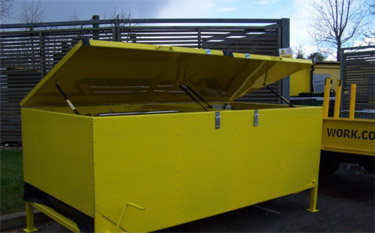ORM Worm Digesters
Concept of Worm Digestion

- It handles Biodegradable Waste
- It uses Livestock – Worms
- It allows Waste to be handled on site
- It impacts on Landfill Costs
- It produces an Organic Growing Media
- It encourages Recycling

The Workers
We use Dendrobaena Veneta worms in our Worm digestion systems, they will consume up to 80% of their body weight per day and produce a 100% organic material for use elsewhere.
Worms are able to digest ~ Ordinary kitchen waste such as peelings, cooked and uncooked scraps, teabags, eggshells, paper kitchen towels, even shredded newspaper etc. In fact virtually any organic kitchen waste (a more extensive list is available upon request).
A Worm Digester is constructed according to what most suit your requirements , depending on
- a) volume of waste available
- b) location
Site Requirements
- You will need a consistent & sustainable waste stream (Catering Waste – Biodegradable Waste).
- Have a designated person responsible for waste handling.
- Install a system for handling, separating and moving waste from bins & bags to your worm digester.
- Have a method of shredding waste or use an ORM macerator
- Make Use of the created organic matter.
Extra's - Single/Three Phase Power Supply (dependant on size).
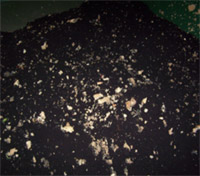
Essential Needs
Critical Factors – Requirements
- Correct Volumes of Food – Not too much
- Moisture – Water Supply
- Oxygen – Air Supply included
- Designated personnel – Monitoring
Waste Handling
- Waste should be handled in bins (if possible).
- Waste must be shreaded or chopped into small pieces.
- Waste should be spread evenly across the worm bed in strips leaving 30% of the surface area uncovered by food.
- Largest variety of food waste give best results.
- Critical to monitor moisture level.
Examples of waste
- Sandwiches
- Cut flowers
- Pot Plants
- Fruit
- Salads
- Vegetables
- Cakes
- Bread
- Non meat frozen products
- Eggs
- Cream
- Cheese
- Pasta
- Cereals
- Toilet Tissues
- Kitchen rolls
- Dried Pet Food
- Fish and meat products(cut off digester only)
- Yoghurt
- Milk
- Chocolates
- Sweets
- Biscuits
- Crisp products
- Savoury Snacks
- Teas
- Coffees
- Sugar
- Preserves
- Flour
- Rice
- Staff canteen waste
- Cafeteria waste
- Leaves and landscape waste
- Dirty/Wet cardboard
- Used hand paper towels
Worm Digester 250
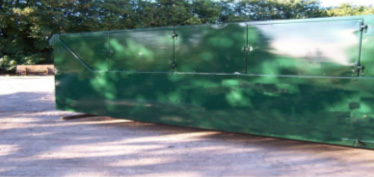
Different sizes available.
Hook lift skip based unit handles 125 kgs waste/day. Primarily used for food waste which when shredded is loaded though the doors and is then self contained.
No odours, no mess and little noise, very easy to manage.
Worm Digester 50
Standard Sizes Available
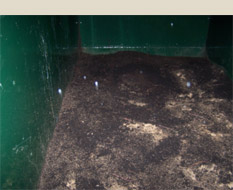
- 8'x4' 25kgs Waste/day
- 12'x4' 37.5kgs Waste/day
- 16'x4' 50kgs Waste/day
- 12'x8' 75 kgs waste/day
- 16'x8' 100 kgs waste/day
- 24'x8' 150kgs waste/day
- 32'x8' 200 kgs waste/day
- Additional 8x8' sections can be added for extra 50 kgs per day
- Flexible System
- Increase Units – Volumes (Long Term)
- Ongoing Use of Wormcast (Cut Off System)
- No External Supplies Required (Power Etc)
- Produced to Clients Specs (If Required)
- 24Hr Time Switch Operates Fan – Air Circulation
- Junction Box – Maintains Power to Heater Tubes
- Heater Tubes are Thermostatically Controlled
- Maintains the temperature inside the Digester
- Single electrical connection for Tubes and Fan system
- Vermicomposting uses particular species of earthworms to process organic wastes into material possessing excellent chemical, physical and biological characteristics for improving plant growth and health.
- During the vermicomposting process, organic matter is fully oxidised and stabilised and the nutrients are converted into readily available forms for plants.
- Vermicomposts have a fine structure, high moisture-holding capacity, greatly increased microbial activity and contain growth regulators produced by micro organisms and the interaction with humic substances.
- Progress project – requires a site visit.
- Evaluate Waste Source – Volume and make up.
- Calculate space and livestock requirements.
- Produce detailed presentation.
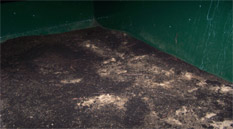

Power Supply - Why?
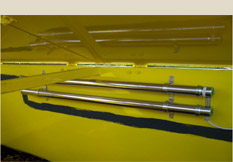
Heater Tubes
The Vermicomposting process
Food Waste Macerator
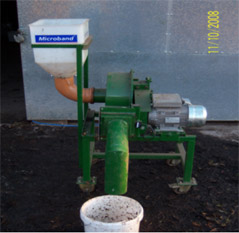
Worm Digester – Conventional
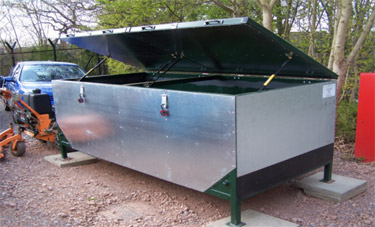
Worm Digester – Clients' Colour
